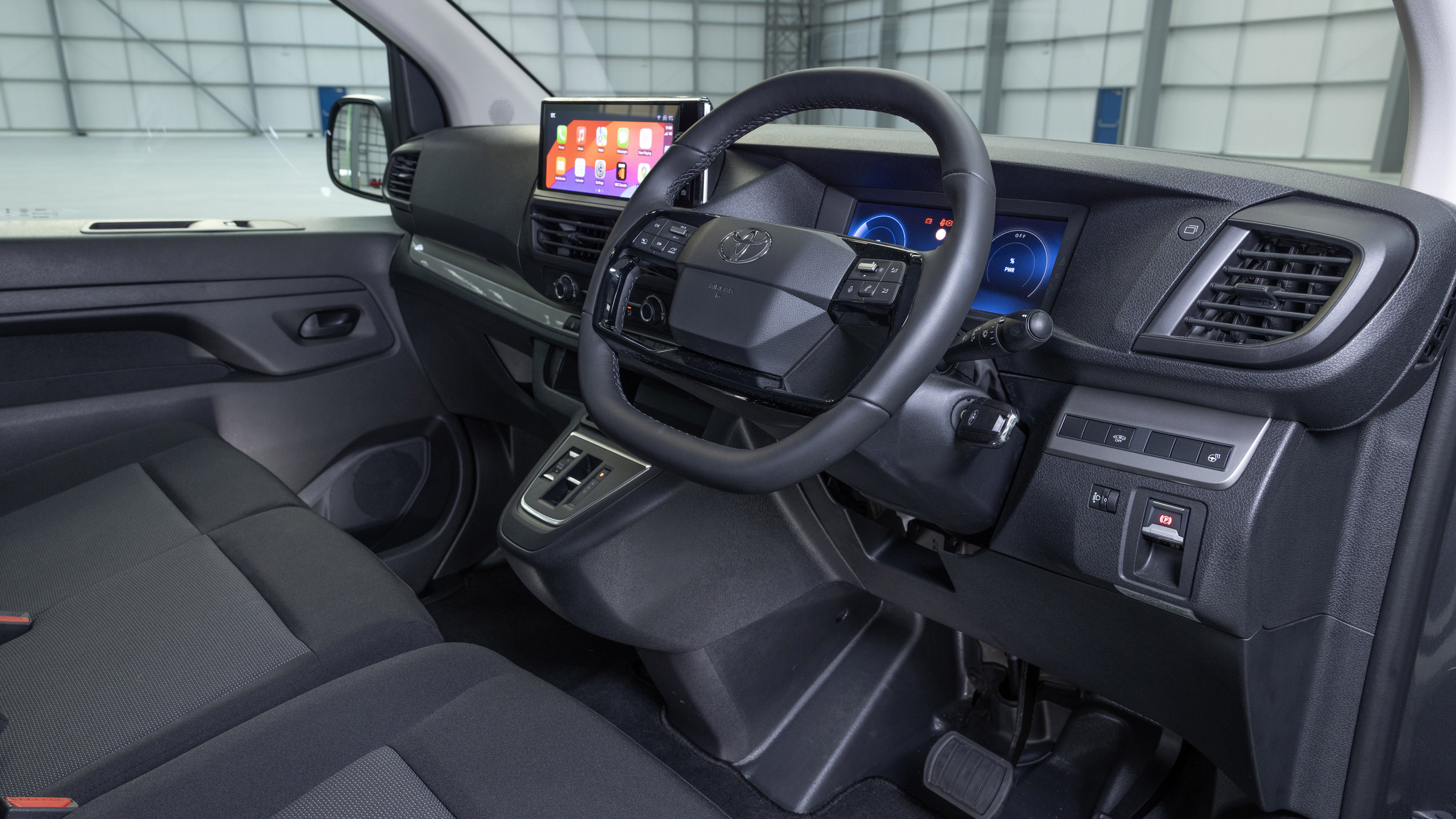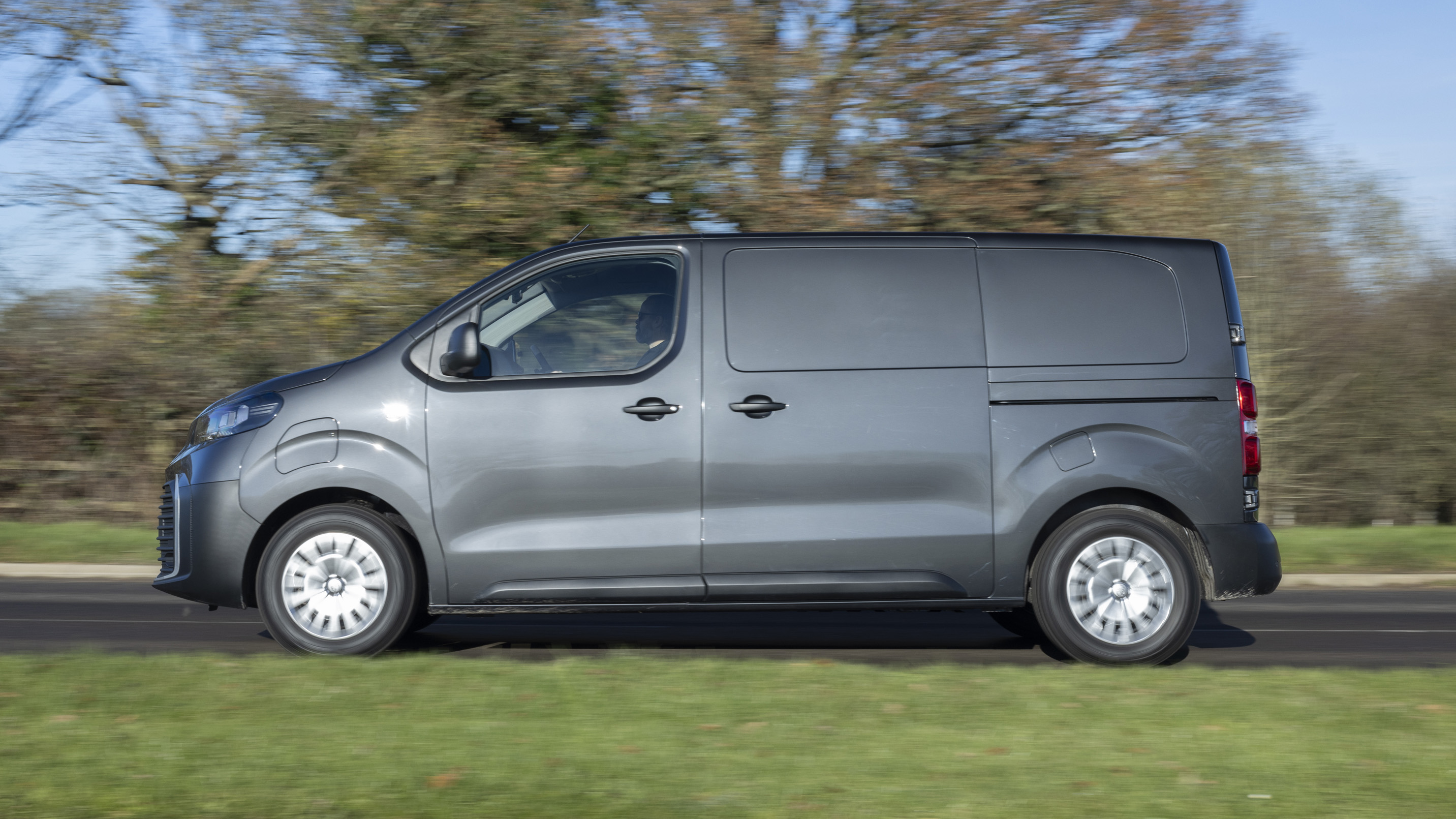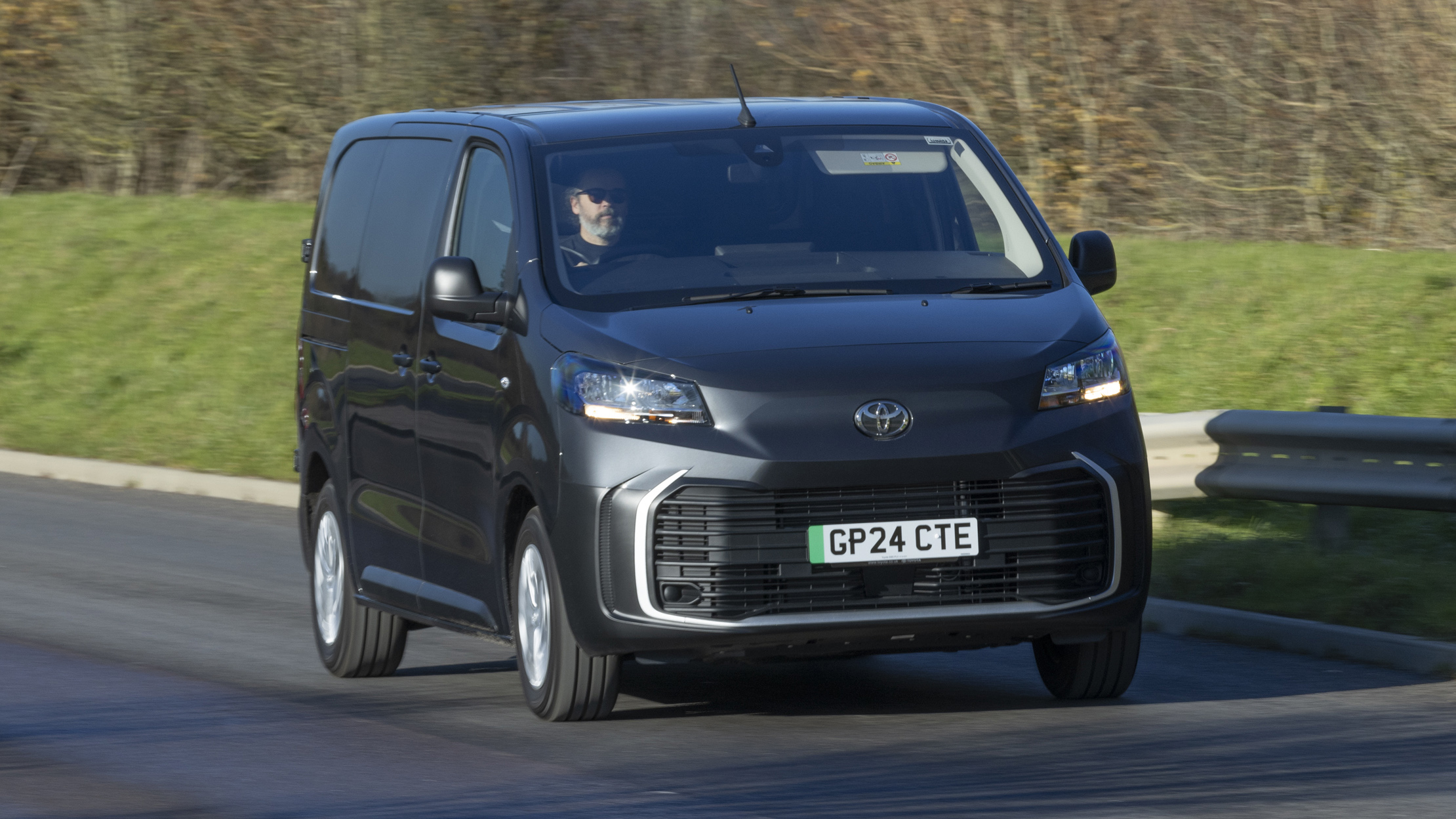
Toyota Proace review
Buying
What should I be paying?
Of your three trim levels, you’ve got a basic one, a sensible middling one, and then the choice between two top ones depending on which size of van you go for. But the glitzy ones feel a bit too nice to ever put to work. All versions get the SmartCargo adjustable load bay, which is handy, and you can spec a ply-lined load bay for a £120 uplift.
The entry trim is Active, which starts at £28,849 excluding VAT and gets 16in steel wheels, cruise control with speed limiter, aircon, a couple of airbags, auto lights and wipers, electric windows and door mirrors, plus the 10in central touchscreen with Apple CarPlay connectivity.
Icon grade kicks off from £29,974 for the 1.5-litre diesel (or £36,974 for the 50kWh EV, or add another £4.5k for the 75kWh battery) and adds digital dials and a wireless phone charger. It also includes navigation on the central screen, while the steel wheels remain but are covered with wheel trims. You get slightly more posh exterior styling too with that chrome surround around the front grille.
Spot a Proace with black 17in alloy wheels and body-coloured bumpers and it’s most likely the range-topping Sport spec, with prices starting at £35,599. That’d mean it has the more powerful 2.0-litre diesel engine and an auto 'box if it’s not electric. If it’s longer and has machined alloys then it’s the £32k+ Icon Premium.
We covered several hundred miles in our Proace Sport and actually bettered the claimed economy of 36.2–39.2mpg. We saw 40.3mpg from the more powerful 2.0-litre diesel. Range was over 500 miles, thanks to the hefty 69-litre tank.
What if I’m going electric?
It’s worth noting that you can’t have an EV in the entry-level Active grade, so prices kick off at just under £37k as mentioned up above. Although if you want the bigger battery then you’re looking at a minimum of £41,682. Oh, and no matter the choice of battery you’ll be able to DC rapid charge at 100kW, meaning a 0-80 per cent top-up takes 30 minutes in the 50kWh and 45 mins in the 75kWh.
Payload for the EVs is 1,000kg for the 75kWh version and 1,253kg for the 50kWh. That puts it broadly in line with the diesels, which offer 999kg in the 1.5, 1,375kg in the less powerful 2.0 and 1,226kg in the range topper. Worth bearing in mind that the electric versions can only tow a maximum of one tonne, though.
What’s this warranty I’m hearing about?
Ah yes, there’s a real mark in favour of the Toyota here, because while its Stellantis siblings generally offer a three-year warranty and then make you pay extra for anything on top of that, Toyota will give you a 10-year, 100,000-mile warranty as long as you service it with the manufacturer. It also offers five years of free roadside assistance.
Featured







